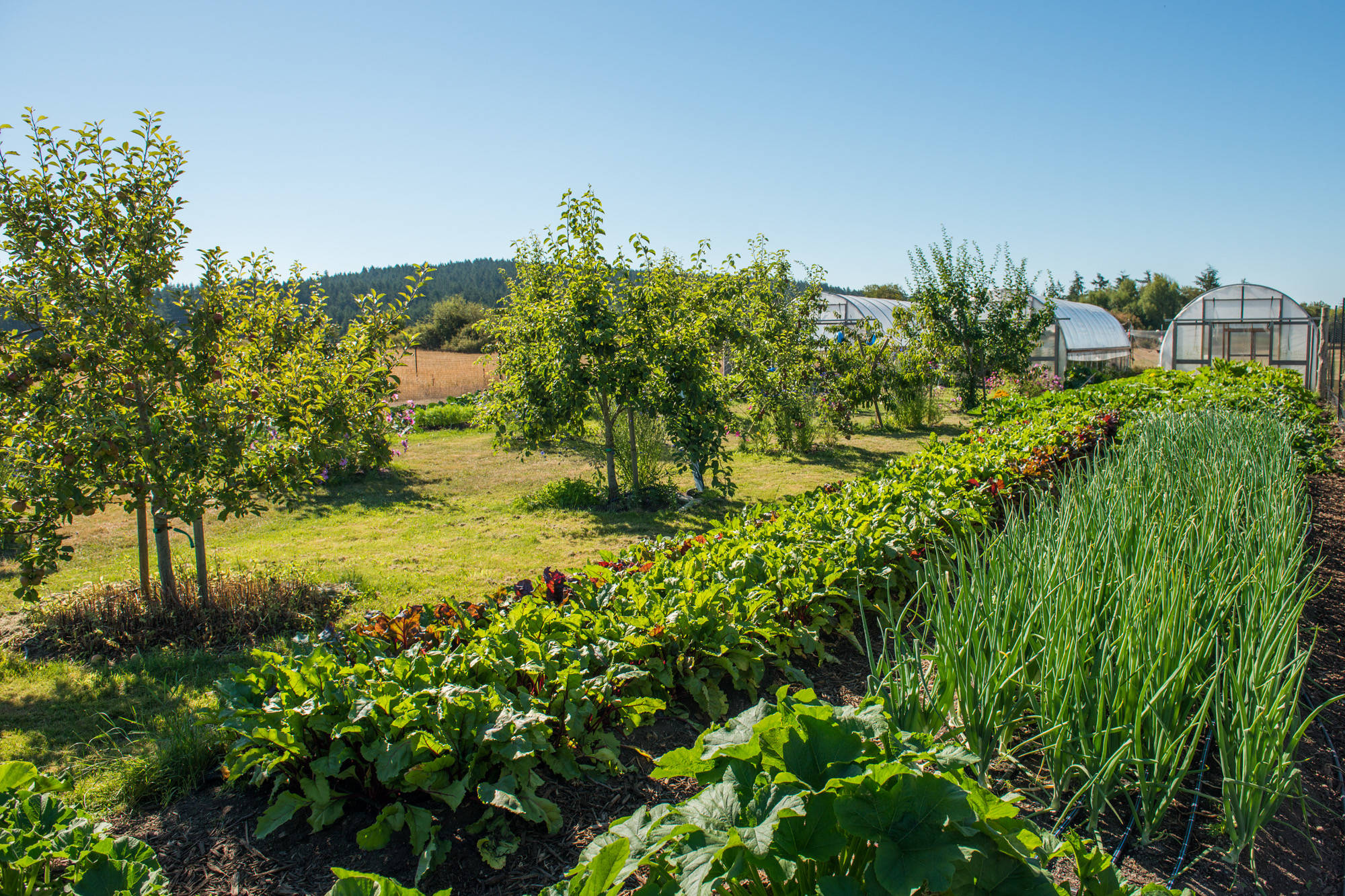Submitted by Stephanie Cariker
From the outside, the Lopez Island School cafeteria looks just like any other institutional mess hall. Fluorescent overhead lights illuminate rows of sterile Formica-topped picnic tables as middle and high schoolers playfully push to the front of the line for their daily nutritional break.
The only difference: it smells like my grandmother’s kitchen.
Long gone are the rancid stenches of mystery meats and colorless slop.
In their place?
An edible educational plan.
The Seed
Years before the U.S. Government would launch their Healthy Food for Schools initiative, here on Lopez Island, Henning Sehmsodrf and Elizabeth Simpson, of S & S Center for Sustainable Agriculture, had already planted the seed.
Why, if surrounded by acres of rich farmland, were our school children eating an unpalatable diet of frozen commodity foods that arrived by boat? Wasn’t there a healthier more sustainable option?
By Autumn 2002, they were determined to do something about it. They began teaching an elective at Lopez Island High School called Farm to School. Basing the curriculum on sustainable agricultural practices, they offered their homestead as an outdoor classroom. Students learned to grow, harvest, prepare and eat healthy foods while also donating the greens they grew to the school cafeteria.
But after three successful years, the impulse to expand the program to grades K-12 had burgeoned beyond what they alone were capable of.
From Seedling to Sapling
For a kernel of plant life to sprout and mature, the appropriate environment must be cultivated. In the case of the Lopez Island Farm Education (L.I.F.E.) program, that cultivation was, and continues to be, largely collaborative.
In January 2006, a formalized joint effort arose between the Lopez Community Land Trust, S & S Center for Sustainable Agriculture, the Heller family, and the Lopez Island School District, making it an official part of the school curriculum.
Light shone in from all corners of the community. Parents donated time to build raised beds. Teachers stayed after class to construct rabbit proof fences. Gardners shared their time and expertise.
And it was Rhea Miller who coordinated all the pieces.
They say it takes a village
Today, 14 years later, each of our 243 students from grades K-12 participate in the appreciation of nature and nutrition through the practice of land stewardship. They are taught to seed, plant, care for, harvest, process and prepare healthy food in a sustainable manner, and much of their bounty is then served to them in the school cafeteria.
It is, quite arguably, the pride of our little island but we can’t do it without your help.
Because the truth is, The L.I.F.E program is only as sustainable as our community is collaborative. This year, the program is estimated to produce approximately 10,000 pounds of food. And while the students certainly take part in the farming process, the brunt of that weight falls on the backs of Suzanne Berry and Valerie Yukluk, the two primary gardeners dedicated to overseeing and maintaining the garden while also harvesting and processing what’s then served in the cafeteria.
They can’t do it alone.
Here’s how you can help
Donate time to harvest and process.
Share knowledge and knowhow.
Contribute monthly stipends. No amount is too small.
If you believe that the future of our food lies in the hands of the youth of today, then please, join us in keeping this program alive.
To get involved contact the Lopez Locavores at info@lopezlocavores.com.



